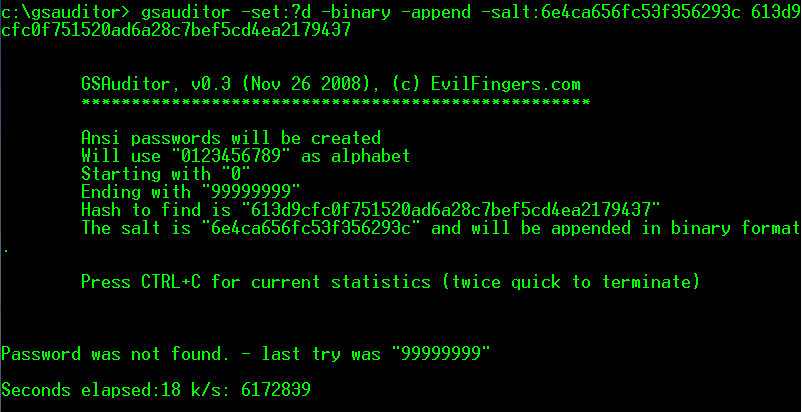Individual desktop computers can test anywhere between one million to fifteen million passwords per second against a password hash for weaker algorithms, such as DES or LanManager. See: John the Ripper benchmarks.[2] A user-selected eight-character password with numbers, mixed case, and symbols, reaches an estimated 30-bit strength, according to NIST. 230 is only one billion permutations and would take an average of 16 minutes to crack.[3] When ordinary desktop computers are combined in a cracking effort, as can be done with botnets, the capabilities of password cracking are considerably extended. In 2002, distributed.net successfully found a 64-bit RC5 key in four years, in an effort which included over 300,000 different computers at various times, and which generated an average of over 12 billion keys per second.[4] Graphics processors can speed up password cracking by a factor of 50 to 100 over general purpose computers. As of 2011, commercial products are available that claim the ability to test up to 2,800,000,000 passwords a second on a standard desktop computer using a high-end graphics processor.[5] Such a device can crack a 10 letter single-case password in one day. Note that the work can be distributed over many computers for an additional speedup proportional to the number of available computers with comparable GPUs.
Despite their capabilities, desktop CPUs are slower at cracking passwords than purpose-built password breaking machines. In 1998, the Electronic Frontier Foundation (EFF) built a dedicated password cracker using FPGAs, as opposed to general purpose CPUs. Their machine, Deep Crack, broke a DES 56-bit key in 56 hours, testing over 90 billion keys per second.[6] In 2010, the Georgia Tech Research Institute developed a method of using GPGPU to crack passwords, coming up with a minimum secure password length of 12 characters

No comments:
Post a Comment